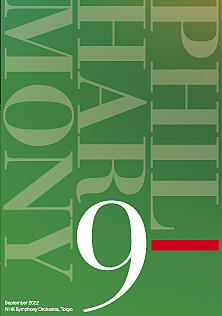- Home
- Concerts
- Subscription Concerts 2022-2023
- Program C
- No. 1963 Subscription (Program C)
No. 1963 Subscription (Program C)
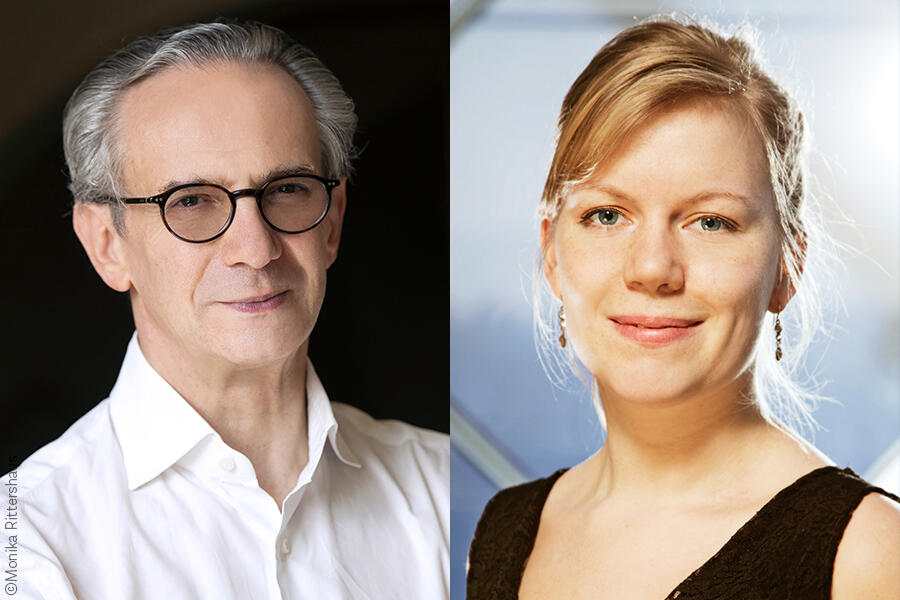
Program
R. Strauss / Don Juan, symphonic poem Op. 20
A long-lived and prolific composer, Strauss particularly excelled in any programmatic music. And the symphonic poem, considered an invention by Franz Liszt, was a top-rated orchestral genre among Romantics like Strauss to fully explore possibilities of musical narrativity and descriptiveness without being bound to Classical strict forms.
Strauss was still in his mid-twenties when he wrote the symphonic poem Don Juan based upon a poem by Nikolaus Lenau about this legendary womanizer of Spanish origin. We are amazed at how exactly and brilliantly the composer’s pen portrays the fearless, passionate libertine with an opening avalanche of dashing and leaping melodies. These primary themes of Don Juan would recur in this flexible sonata-form music. The following materials describe the hero's unsatisfied pursuit of the ideal womankind, such as the violin solo evoking a lady he encounters and then the oboe solo hinting his love affair with another. After a dramatic silence, the gloomy E-minor ending suggests that he meets his fate despairingly.
[Kumiko Nishi]
R. Strauss / Oboe Concerto D Major
Strauss' long musical journey was not stylistically constant. Late-Romantic Don Juan (1888) brought him a reputation, before he joined the avant-garde with sensational operas Salome (1905) and Elektra (1908) propelling musical dissonance. Soon after, he broke off from this radicalism to stay with reactionary late-Romanticism for the rest of his career.
Written in his latest years in 1945, the Oboe Concerto was Strauss' first concerto for the instrument, and he had written only three concertos before that. The reason that he came to create one of the important oboe concertos alongside Mozart’s was his encounter with an American. This soldier, who was a professional oboist in peacetime, visited Strauss just after World War II and asked him whether he had ever thought of writing an oboe concerto.
Inspired by the question, he began to sketch one after a while.
This Concerto is often referred to be Mozartian in virtue of its graceful melodies, transparent orchestration and Classical structure. The three movements are performed without pause, which makes this pastoral but technically and physically difficult piece more demanding for the oboist. It begins with cellos introducing a wiggling four-note melody which is a key motif of the first movement. The dreamy slow movement ends with the oboe cadenza on the strings' pizzicatos. The merry finale in duple time has a short cadenza followed by a gracious section in waltz time.
[Kumiko Nishi]
R. Strauss / Suite from the Opera Der Rosenkavalier
Der Rosenkavalier was a turning point in Strauss’ stylistic transition. As opposed to the grisly, almost atonal predecessor Elektra, it was viewed as a Mozartian comedy by the composer and his librettist Hugo von Hofmannsthal. This, so to say, “The Marriage of Figaro wearing the late-Romantic music” incited contemporary critics to accuse Strauss of regression, while its 1911 premiere was an unexampled success among the audience.
The opera is set in 18th-century Vienna. The title refers to an imaginary noble custom for a suitor to send a messenger with a silver rose to the bride-to-be. The center of the bittersweet story is Marschallin, a marshal’s wife, having an affair with the teenage Count Octavian. He, by recommendation of his mistress, becomes a Rose Cavalier for Baron Ochs and presents the rose to beautiful young Sophie. Octavian and Sophie fall in love with each other at first sight. Marschallin, heartbroken, has the grace to accept the reality.
The orchestral suite performed today is the one prepared anonymously authorized by Strauss himself for its 1945 publication. Without any break, it appears to be a symphonic poem freely treating some highlights and waltzes from the original. The suite starts with a famous lovemaking part from the opera with the youthful ascending theme of Octavian (horns) and the refined descending theme of Marschallin (strings) entangled. Later we hear the recuring glittering motif of the silver rose played mainly by flutes, harps and celesta.
[Kumiko Nishi]
*This concert will have a duration of 60 to 80 minutes without an interval.
Artists
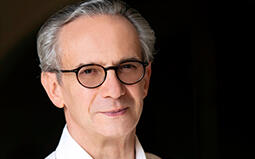 ConductorFabio Luisi
ConductorFabio Luisi
Fabio Luisi hails from Genoa. He is the Principal Conductor of the Danish National Symphony Orchestra and the Music Director of the Dallas Symphony Orchestra. From September 2022, he assumed the position of Chief Conductor of the NHK Symphony Orchestra, Tokyo.
Fabio Luisi was Principal Conductor of the Metropolitan Opera in New York, General Music Director of the Opernhaus Zürich, Principal Conductor of the Wiener Symphoniker, as well as General Music Director of the Staatskapelle Dresden and the Sächsische Staatsoper, Artistic Director and Principal Conductor of the MDR Sinfonieorchester Leipzig, and Music Director of the Orchestre de la Suisse Romande. He is Music Director of the Festival della Valle d’Itria in Martina Franca (Apulia) and has appeared as guest conductor with numerous renowned ensembles, including the Philadelphia Orchestra, the Cleveland Orchestra, the Münchener Philharmoniker, the Filarmonica della Scala, the London Symphony Orchestra, the Concertgebouworkest, and the Saito Kinen Orchestra, as well as with various prominent opera orchestras.
Important recordings include Verdi, Bellini, Schumann, Berlioz, Rachmaninov, Rimsky-Korsakov, Frank Martin, and Franz Schmidt, the largely forgotten Austrian composer. In addition, he has recorded various symphonic poems by Richard Strauss, and a lauded reading of Bruckner’s Symphony No. 9 with the Staatskapelle Dresden. His recordings of Wagner’s Siegfried and Götterdämmerung with the Metropolitan Opera Orchestra won Grammy awards.
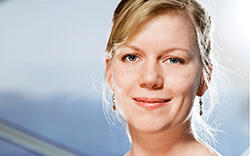 OboeEva Steinaa
OboeEva Steinaa
Eva Steinaa is a Danish oboist. She was born in 1993, started learning oboe at the Copenhagen Music School at the age of nine, and at the age of "fteen, went under the tutelage of Joakim Dam Thomsen, solo oboe player in the Royal Orchestra, at Sankt Annæ High School.
Then at the age of seventeen, she started to study at the Royal Danish Academy of Music. She won the gold medal in Berlingske’s Classical Music Competition in 2009, and the second prize at the Øresund Soloist Competition. She became an oboist at the South Jutland Symphony Orchestra in 2013, and in the following year, became Principal Oboe of the Danish Radio Symphony Orchestra, the position she has held to date, where Fabio Luisi is Music Director. While performing as a solo oboist, she is also active
in chamber music performances, and particularly in duo performances with her twin sister and flutist Maria Steinaa. The work she has selected for her first appearance with the NHK Symphony Orchestra is Oboe Concerto by R. Strauss. The focus of her performance is how she will express the tone of this work, which is said to have described the composer' s mental state in his closing years, under the baton of Fabio Luisi whom she has been closely associated with.
[Motoyuki Teranishi, music critic]
Pre-concert Chamber Music Performance
Pre-concert Chamber Music Performance
Program:Joseph Jongen / Two Pieces for 4 Cellos Op. 89̶Légende, Danses
Artists
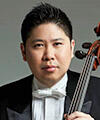
Rei Tsujimoto
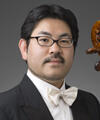
Kenʼichi Nishiyama
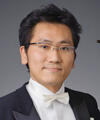
Hiroya Ichi
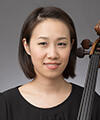
Miho Naka
Download
Ticket
Program C
No. 1963 Subscription (Program C)
NHK Hall
Google Map
Seating Chart
Single Tickets Release Date
Pre-sales for Subscribers:Thursday, August 4, 2022
*about subscribers
Sale to General Public:Sunday, August 7, 2022
Price
| S | A | B | C | D | E | |
|---|---|---|---|---|---|---|
| Ordinary Ticket | 7,400 | 6,500 | 5,200 | 4,200 | 3,200 | 1,600 |
| Youth Ticket | 3,500 | 3,000 | 2,400 | 1,900 | 1,400 | 800 |
Seating chart Enlarge Print PDF
*tax included
*About Youth tickets (Available at N-Kyo Guide)
*Subscribers receive a 10% discount (Available at NHKSO WEB Ticket and N-Kyo Guide)
*For wheelchair-accessible seats, please refer to the N-Kyo Guide
Starting Dates of Ticket Sales
ANNUAL SUBSCRIPTION TICKETS/
SEASONAL SUBSCRIPTION TICKETS (AUTUMN) Mon., July 18, 2022 11:00am
[For Subscribers: Thu., July 14, 2022 11:00am]
Youth Tickets
Youth Tickets are great options for those of 25 years old and younger
WEB Select 3 Plus
Choose three or more of your favorite concerts and get a discount on single tickets
*Only available at NHKSO WEB Ticket NHKSO WEB Ticket (Accesible from Japan only)
For further information and subscription application
N-Kyo Guide TEL:0570-02-9502

